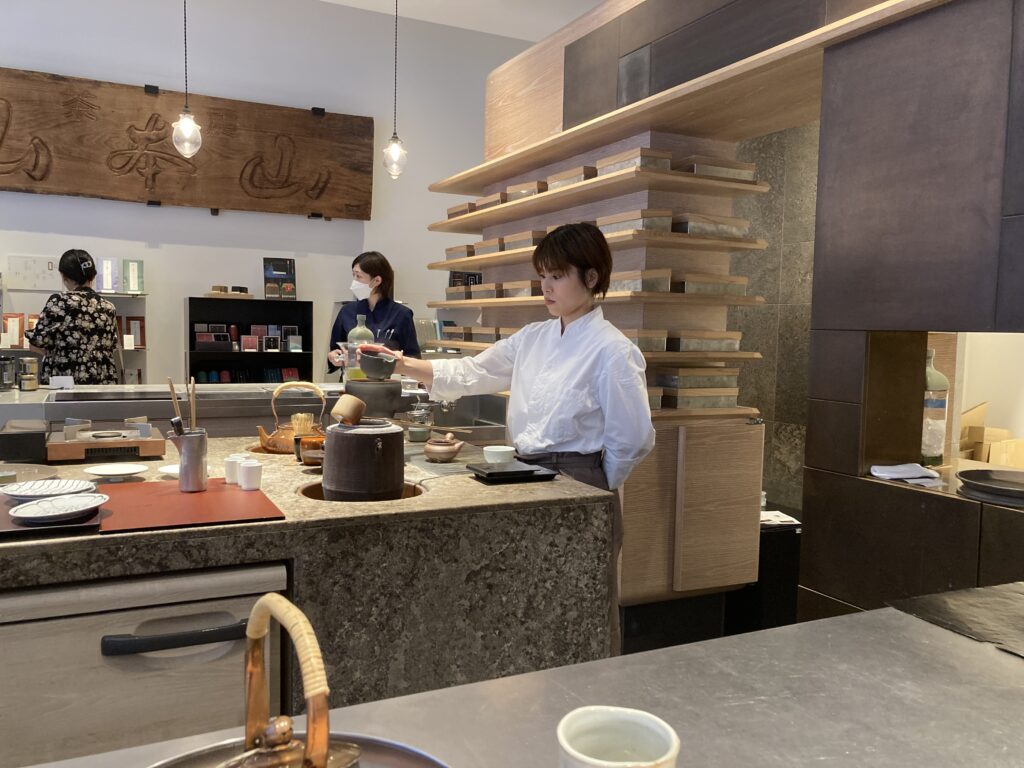
There are two types of Japanese green tea: matcha tea and loose-leaf tea. These days, matcha tea has gained worldwide popularity due to its use in matcha sweets and beverages. Still, ordinary Japanese people, including myself, usually drink green tea brewed in a pot. If you’re interested in brewed green tea, I recommend visiting Fujie Sabo (cafe and restaurant) by Yamamoto Yama, famous for its excellent tea and seaweed.
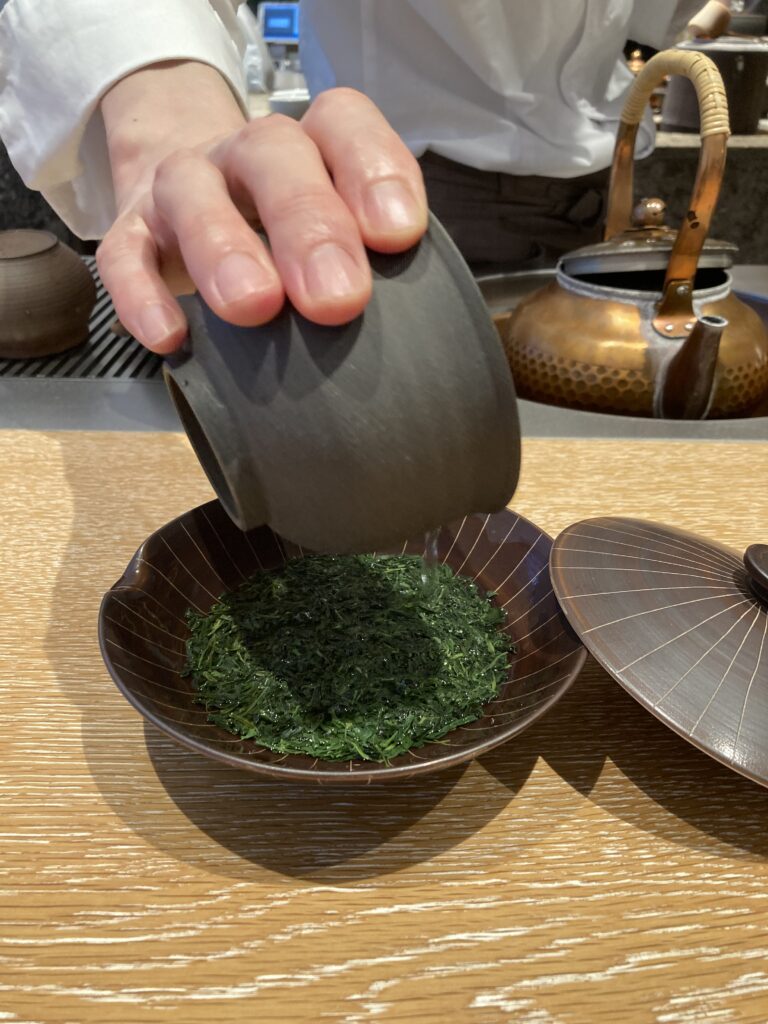
Yamamoto Yama was established in 1690 as the oldest tea leaf dealer. Yamamoto Kahei, the 6th generation owner of Yamamoto Yama, discovered high-quality leaves and developed a technique for producing high-quality tea leaves, known as Gyokuro. So, Yamamoto Yama is an original and authentic Gyokuro maker in Japan.
The first brew of Gyokuro, around 60 degrees Celsius, has a slightly sweet taste, fresh bitterness, and a hint of umami (see note below), accompanied by a gentle aroma that evokes the feeling of relaxing in the woods.
<Note>
According to the Cambridge Dictionary, umami is a strong taste that is not sweet, sour, salty, or bitter and that is often referred to as “the fifth taste,” but the Japanese feel it’s a savory taste, not strong so much. Perhaps we have grown accustomed to umami, making us fairly familiar with it, while it may seem strong to foreigners who are experiencing it as a new taste.
Please refer to https://dictionary.cambridge.org/us/dictionary/english/umami.
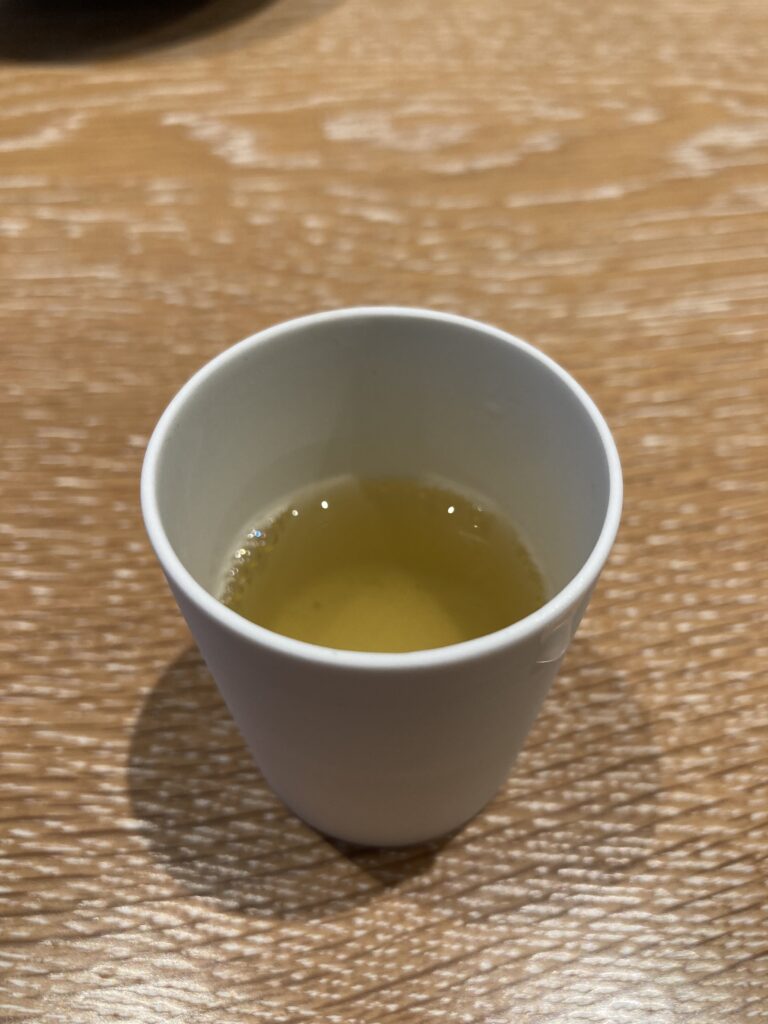
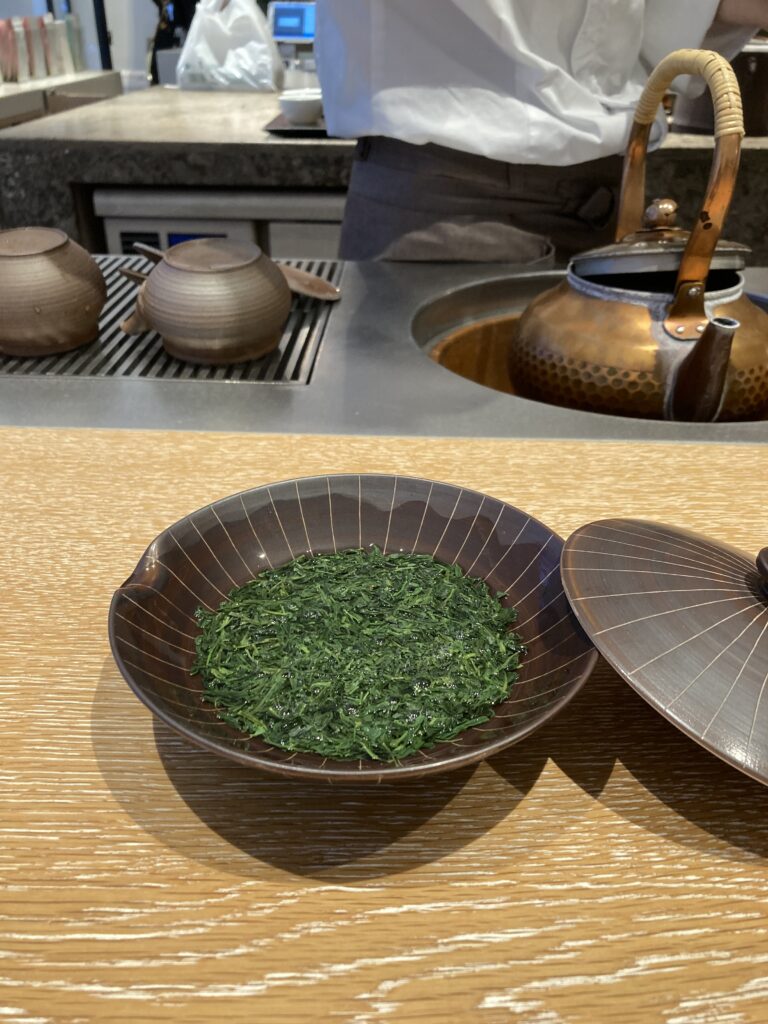
The second brew has less umami and sweetness, but it provides a smooth bitterness. Even though the umami flavor in the first brew took me by surprise, I prefer the second one. It helps me feel more relaxed when I sip it. And it was served with Amanatto, sweet beans, which complemented the fresh bitterness of the tea.
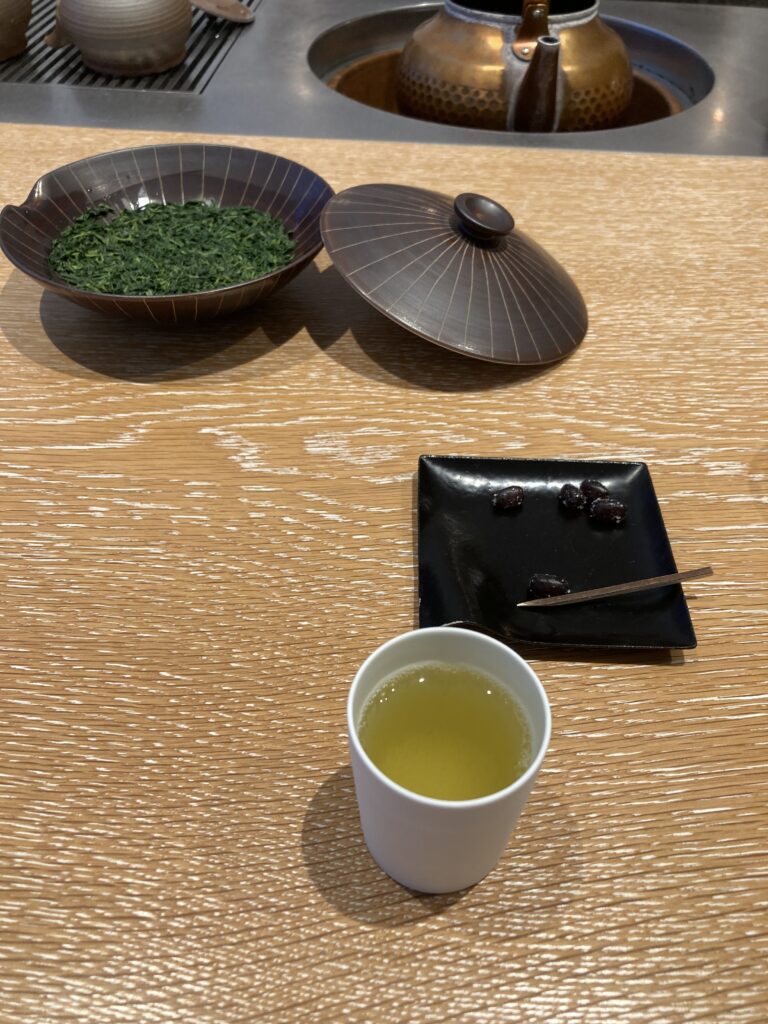
And then, the most surprising experience came with the third brew. The third one was brewed in hot water, at about 90 degrees Celsius, and it provided me with moderate bitterness, which was a relatively familiar taste, similar to the tea I brew at home daily. But what surprised me was the tea leaves after brewing, served on a small dish, and then the cafe staff encouraged me to savor them with Ponzu, a dressing of soy sauce and vinegar. He told me that the tea leaves, after the third brew, had no bitterness and a similar taste to boiled vegetables, such as spinach. He was right! It was yummy, and I wanted to eat it with steamed rice.
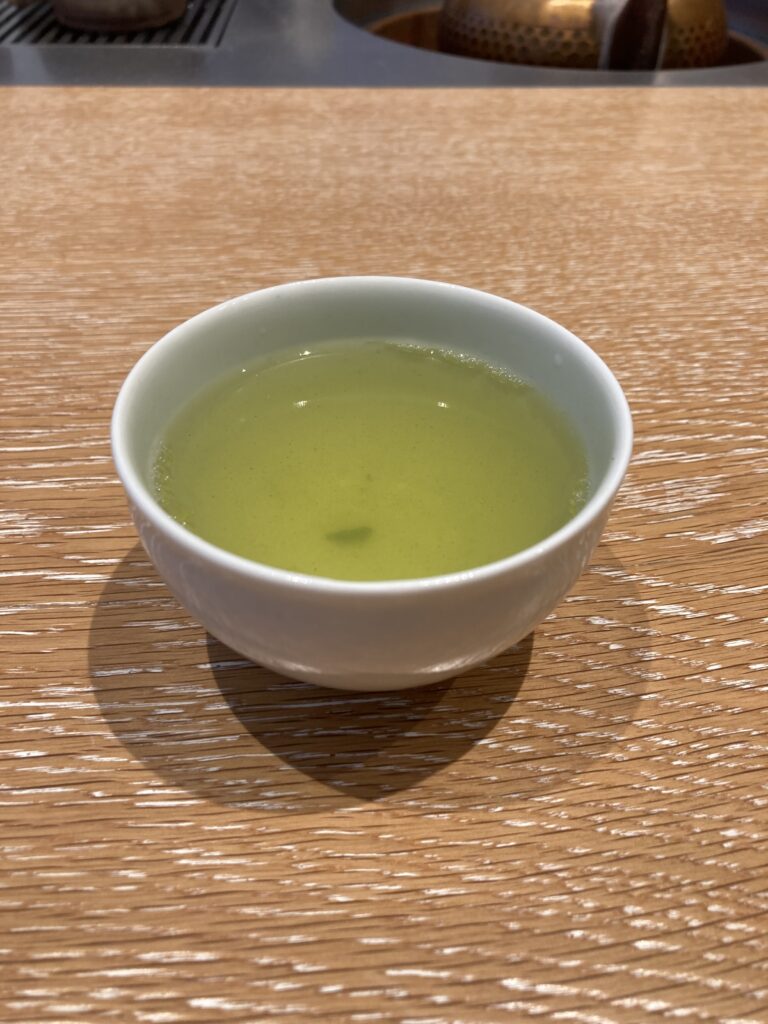
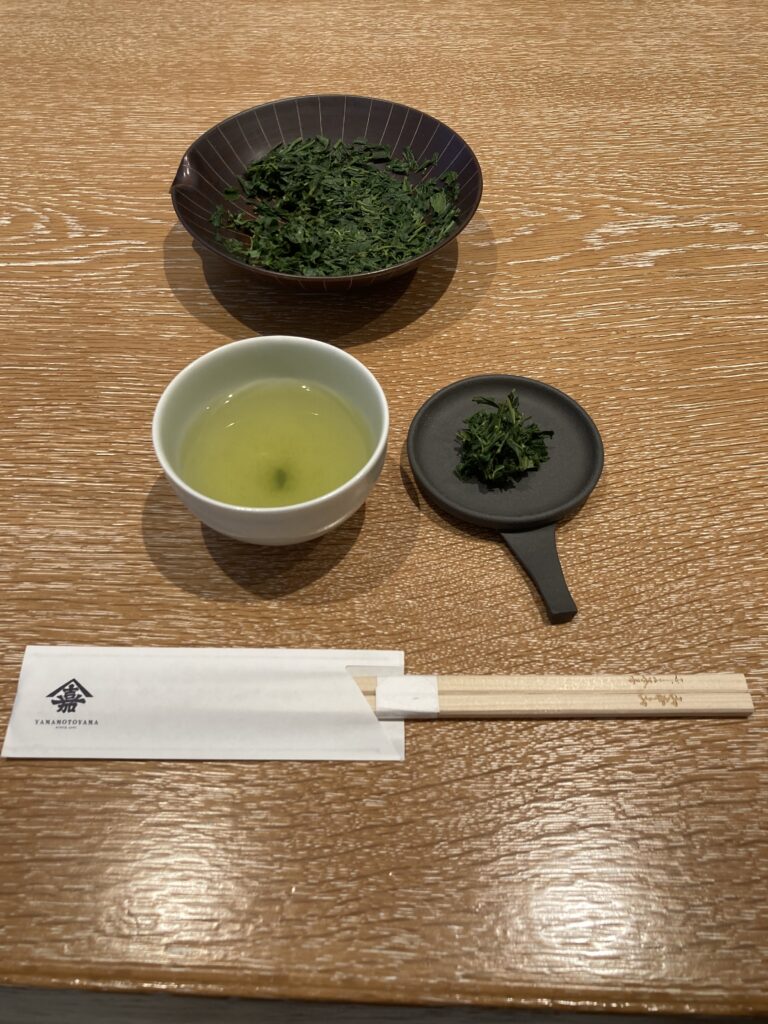
The next delicious event at Yamamoto Yama features steamed rice topped with high-quality shredded seaweed sheets and roasted loose seaweed, which is separately flavored with olive oil, roasted salt, and homemade soy sauce. They covered steamed Koshi-hikari, the highest-ranked rice in Japan. It’s breathtaking, and I have no words to describe its delicious taste.
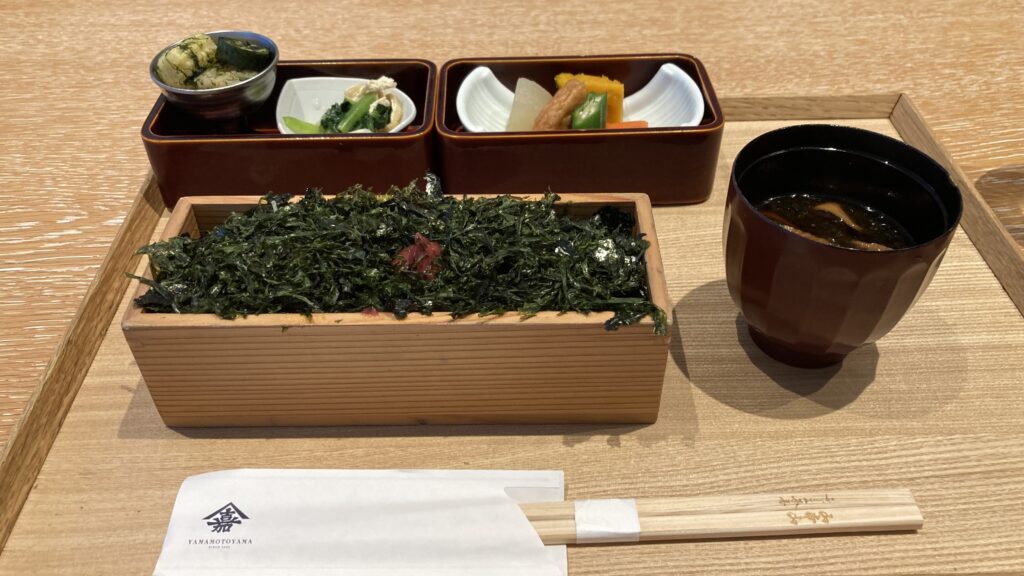
I enjoyed the tea and the meal at Fujie Sabo by Yamamoto Yama. Eventually, I bought packets of seaweed seasoning, nori-chazuke, which is served with rice in hot water. I also enjoyed it the following morning for breakfast.
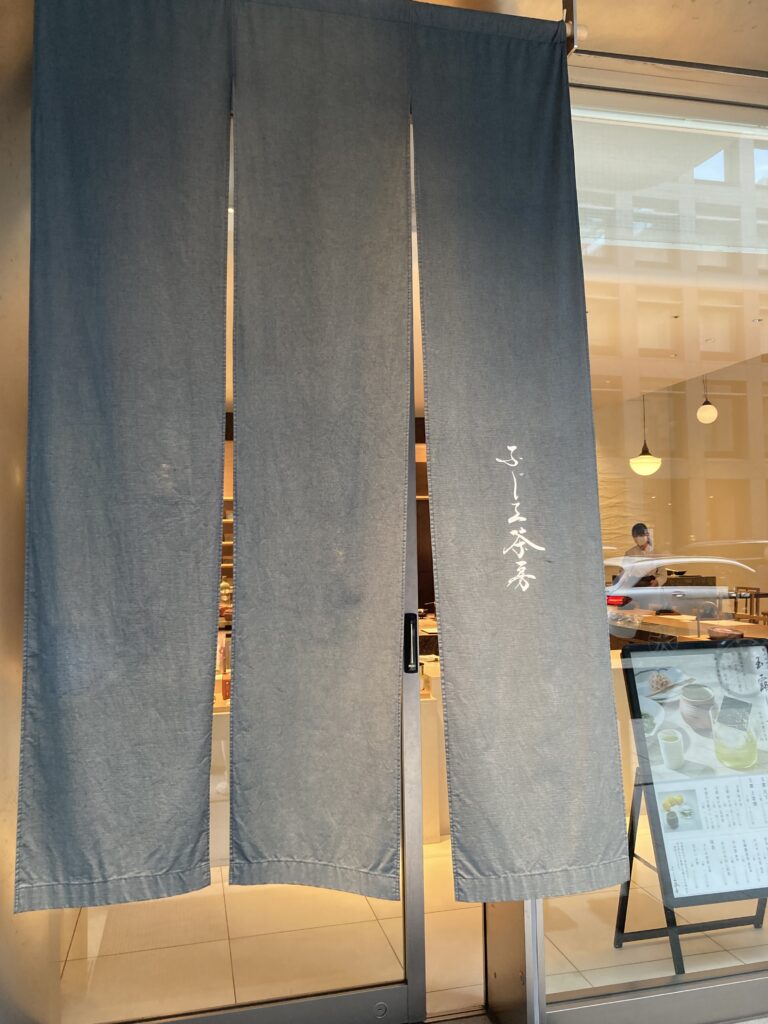

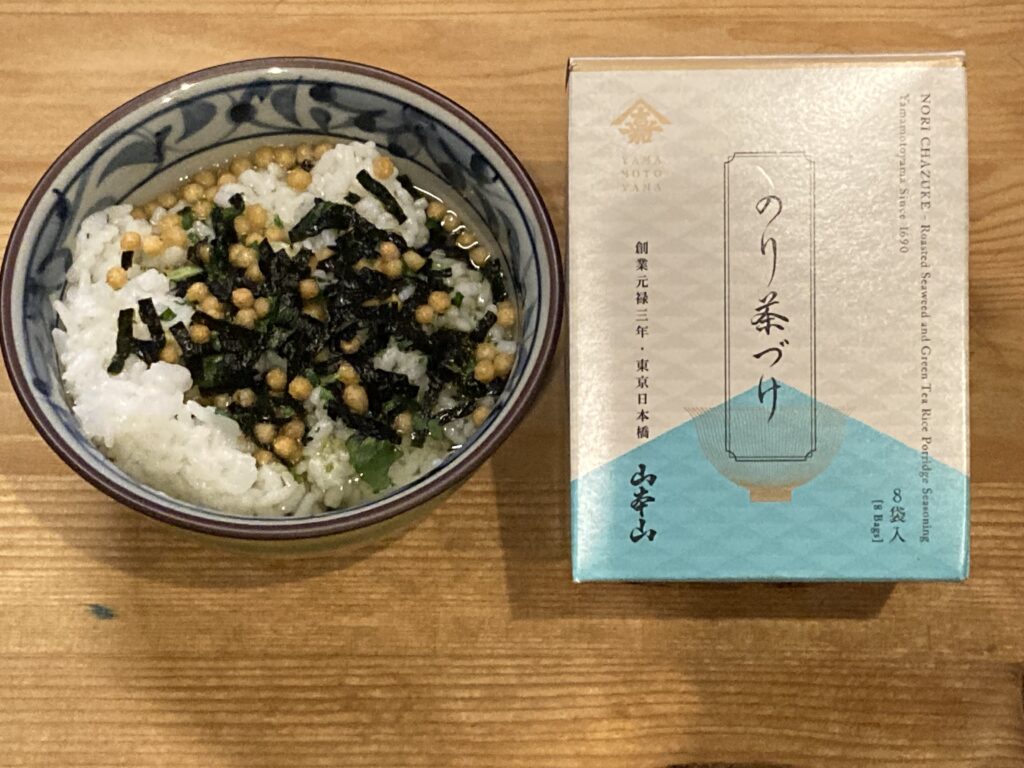
The cafe also serves you an artistic wagashi, traditional Japanese sweets, which go well with green tea.
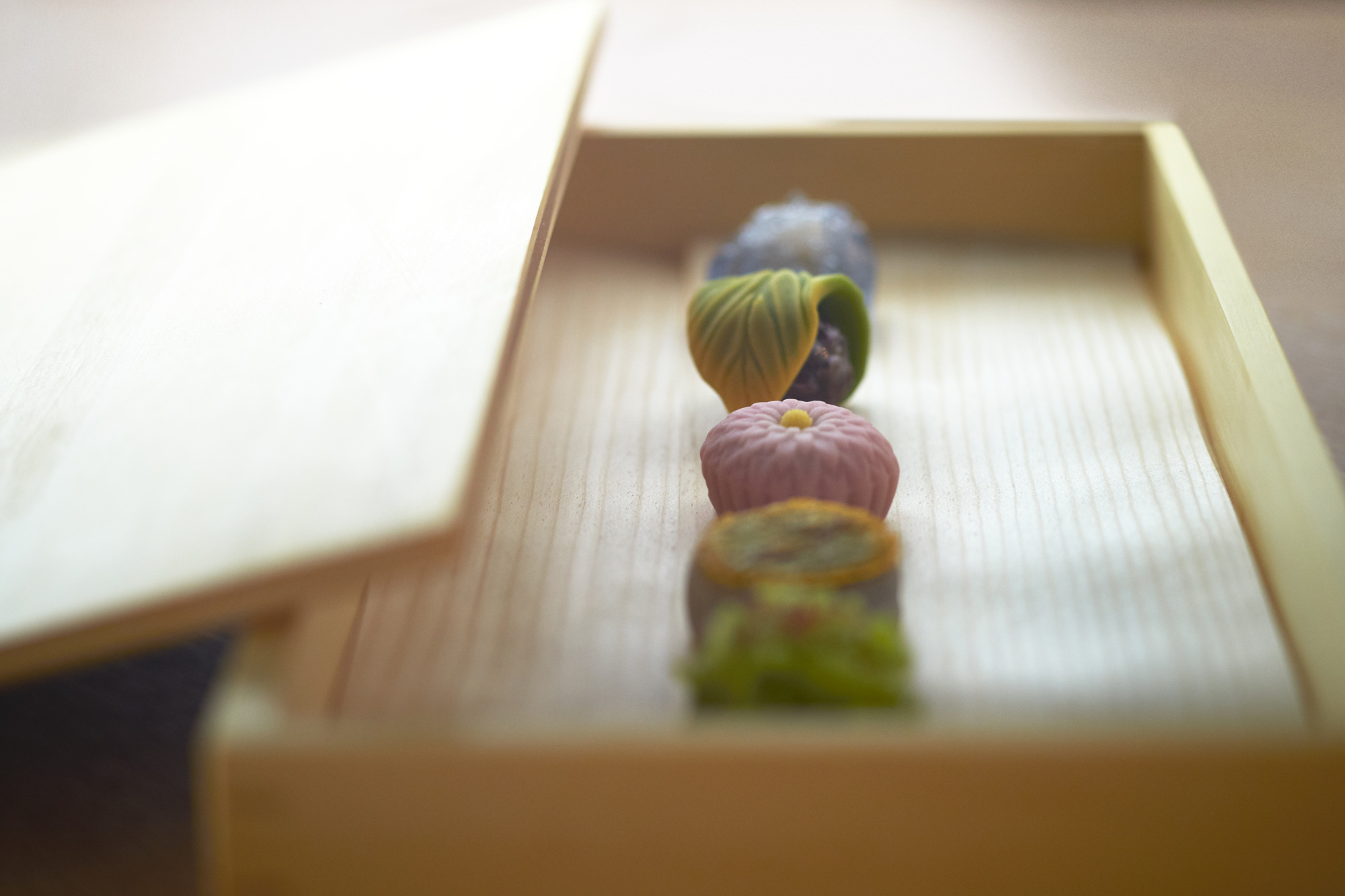
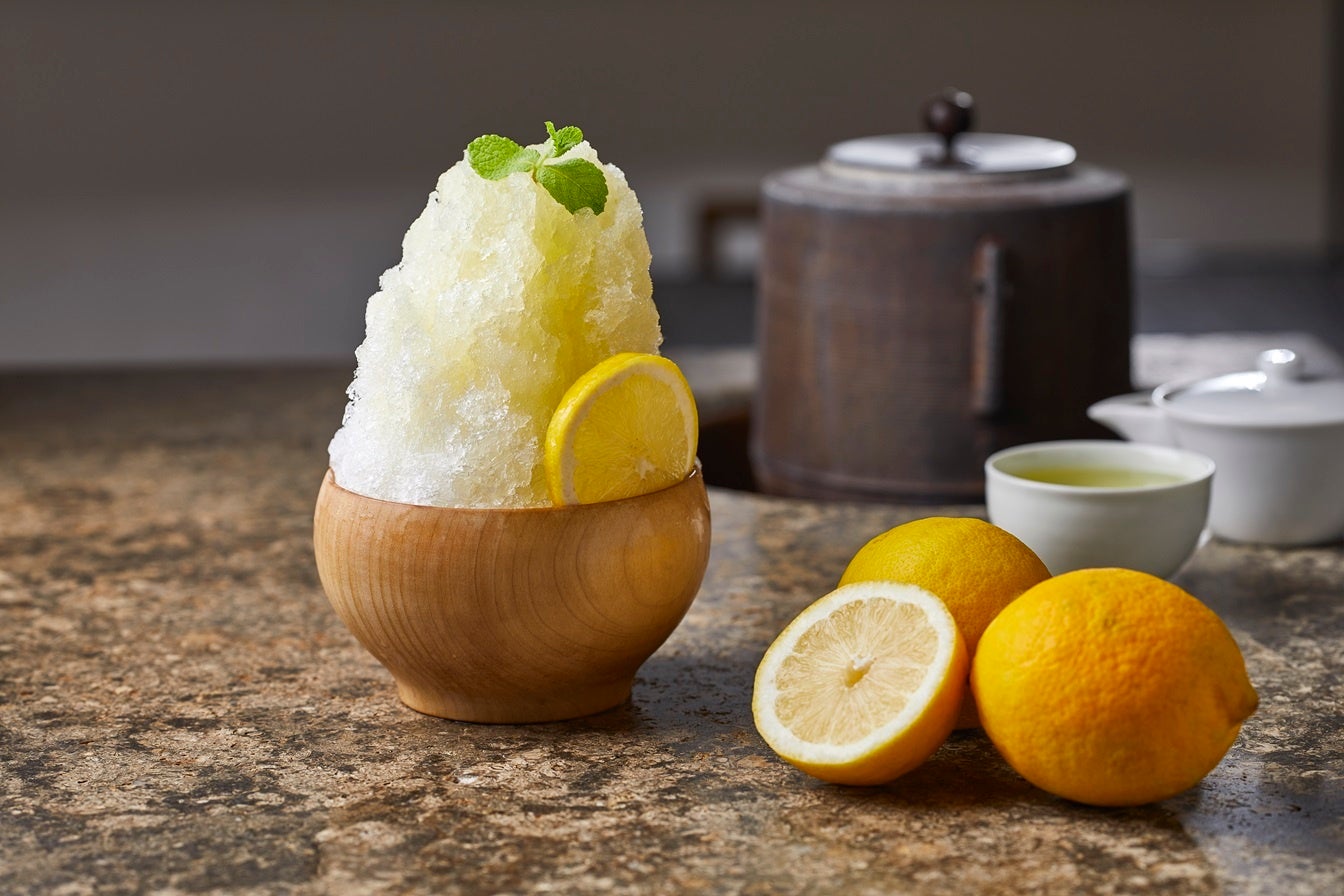
Thank you for reading my blog post. If you are interested in Yamamoto Yama and need help from an English-speaking guide, please click the “Contact me!” link below. I am willing to take you to Fujie Sabo and tell you more about Yamamoto Yama’s history, tea, and seaweed.
Please click the links to get updated via my X (former Twitter) and Instagram.
X (former Twitter): https://x.com/ToruGuide
Instagram: https://www.instagram.com/toruhigaki/
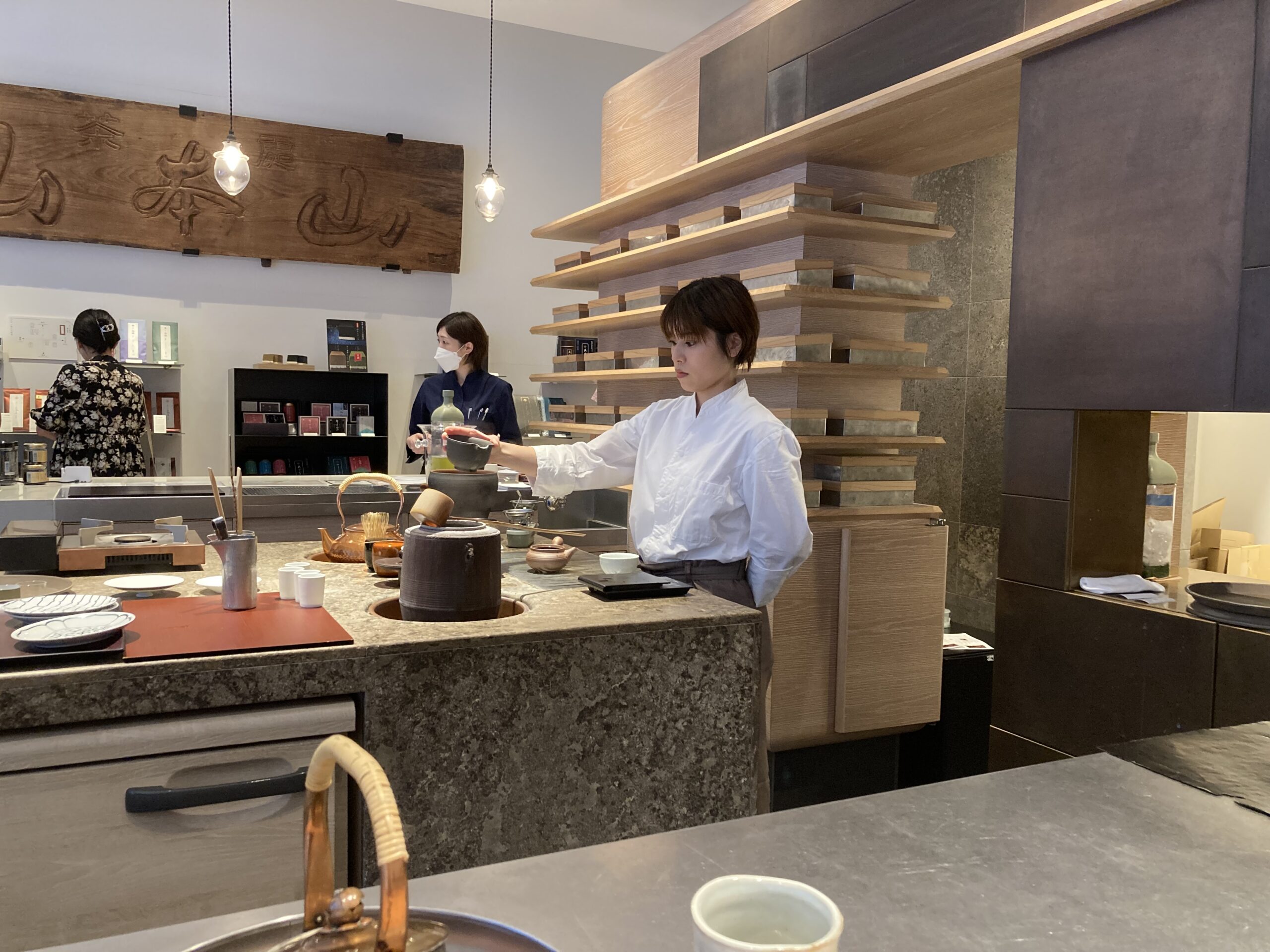



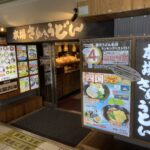
Comment